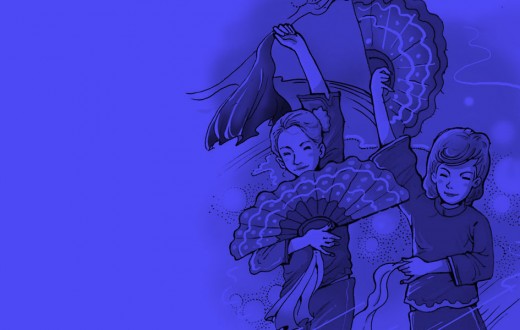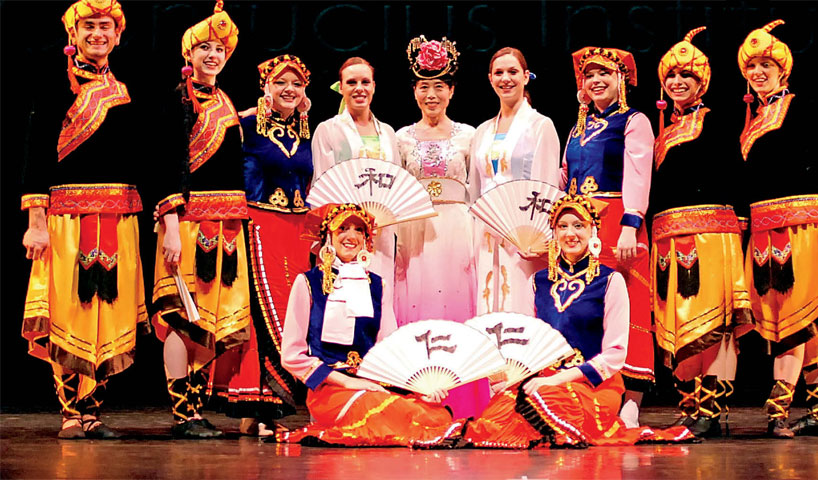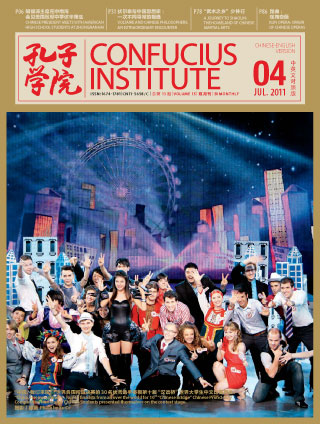

“Dance — Our Common Language”
Laura Neese, an American student, tells us about his experience taking dance classes from a Chinese teacher: “Our performance achieved great success and gained high praise from all honored guests present. After the performance, Ms. He gave each of us a piece of paper with “Practice makes perfect” written on it in Mandarin and English.”
What’s China really like in the eyes of foreigners? Which parts of Chinese culture are the most attractive? What are their personal experiences while learning Chinese language? Are there any touching stories that happened to them during their stay in China? You will find the answers here. After reading the following stories, don’t you have the desire to pick up your pen and put down something in Chinese about things around you?
Laura Neese, U.S.
Imagine taking a dance class from a Chinese teacher who speaks no English. No problem, right? Dance majors from Dancing Department of University of Buffalo and I not only experienced it personally but also shared its joys in this class together.
To achieve perfect performance at the grand opening of the new campus Confucius Center, the university has invited Lady He Xingqiong, a dancing artist of the Chengdu Musical Theater of China, to teach us Chinese folk dance. And this was the first time for us to have access to Chinese dance.
At the first rehearsal, the cast members of the dance troupe shared glances and words of excitement. We couldn’t wait to meet this choreographer from China whose resume we had studied on our computer screens and whose full name we couldn’t pronounce.
Our first impression of Ms. He was that she was a tiny lady who could speak a mile a minute in a tongue we couldn’t understand and twist her body in ways we didn’t think possible. During our first meeting, we watched videos of the dances we would be learning, with a mixture of excitement and intimidation. The dancers moved precisely and clearly, and in one of the pieces, extremely fast. How were we American-trained dancers, with very different technical and cultural backgrounds, going to be able to embrace and perform the foreign vernacular movements convincingly?
And so we began with basics and learned to walk in “Chinese. Ms. He had very high expectations for us and challenged us in every rehearsal. The choreography was intricate, with detailed attention to shoulder, hand, and finger placement and pointed and flexed feet. At times Ms. He would become upset when we did not understand or execute a movement correctly. Although Ms. He did not speak much English, she could certainly say “no” and “wrong” in English whenever a mistake was made in our movements.

Ms. He’s ability to contextualize other traditional Eastern movements in familiar ballet terms was very helpful for our Western brains and bodies. She would raise rounded arms above her head in fifth position and say, “Ballet.” Then she would flip her palms upward, bend her elbows, and say, “Chinese.” Her pointed, turned-out foot would shift into a flexed, parallel position, and so on. And these are basic movements for feet in Chinese folk dance.
Ms. He’s vivid, theatrical explanations of the themes and characters of each dance helped us connect with each role to draw out the right performance quality. In the dance Come Catch Me Brother, we took on roles of flirting young men and women in the countryside. Ms. He dramatically demonstrated the roles: dainty, high-pitched girls and deep-voiced, grounded, mischievous boys. She eased us into character through laughter and then said, “Go.” The seemingly impossible phrasing and clarity of movement came with better understanding of characters and lots of practice.
Our technical advancement improved exponentially and surprisingly quickly as we developed a bond with our choreographer. Within only a few weeks, we could understand Ms. He’s pidgin mixture of Mandarin, broken English, and gestures and facial expressions even before our translators reiterated it. And Ms. He began to know better each one of us and every rehearsal became so happy and gay for us all. It was amazingly wonderful that we could understand each other without the help of language.
On the day of the performance we were thrilled to don our beautiful custom-made costumes and share what we had worked so hard to learn with dignitaries from the University at Buffalo, the City of Buffalo, and Capital Normal University in Beijing. During tech rehearsals, guest artists and performing-arts students from Capital Normal University joined us. As we warmed up together, they helped us refine our Mongolian dance.
Our performance achieved great success and gained high praise from all honored guests present. After the performance, Ms. He gave each of us a piece of paper with “Practice makes perfect” written on it in Mandarin and English. I have been getting inspiration from these four characters ever since and have learned how to embrace cultural differences through the commonalities of art form. I hope that one day I can see Ms. He again in China.
 Published in Confucius Institute Magazine
Published in Confucius Institute MagazineMagazine 15. Volume 4. July 2011.
View/Download the print issue in PDF























No hay comentarios:
Publicar un comentario